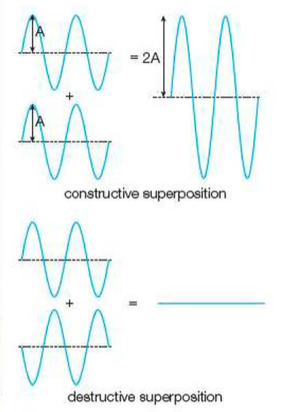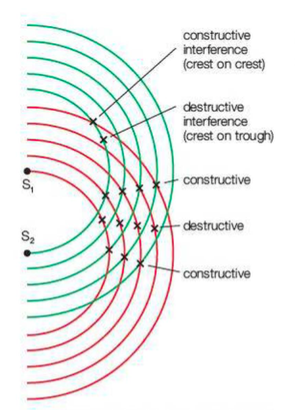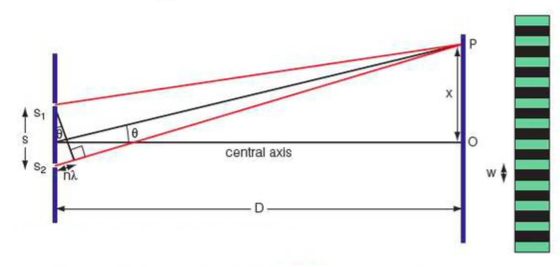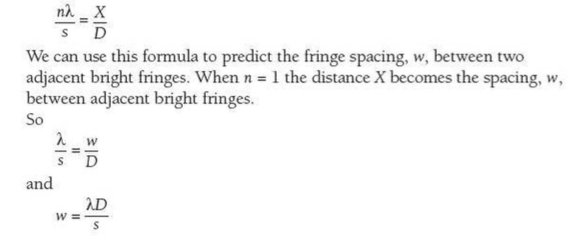Interference
Introduction
⇒ Two source waves can overlap to produce constructive and destructive regions of superposition

⇒ However, this will only occur when the two source waves are coherent
- Two source waves are coherent when the waves from each source have the same wavelength (and therefore the same frequency) and they have a fixed phase difference
⇒ E.g. light from two coherent sources can produce bright light (i.e. maxima) when light interferes constructively or darkness (i.e. mminima) when light interferes destructively
Interference patterns from sound waves
⇒ A single sustained note from two speakers can interfere
⇒ The loudness of the sound in front of the speakers will change in a regular pattern from loud to soft due to patterns of constructive and destructive interference
⇒ The path difference is the difference in the distance travelled by the two waves (and it is usually measured in the number of wavelengths travelled)
⇒ If the waves are in phase at the time they leave the speaker, they will be in phase at any point where there path difference is a whole number of wavelengths (e.g. 1, 4, 183 wavelengths)
⇒ If the waves are in phase at the time they leave the speaker, they will be out of phase where the phase difference is a whole number of wavelengths plus a half wavelength (e.g. 0.5, 1.5, 9.5, 123.5 wavelengths)
Young's Double Split Experiment - Required Practical
⇒ This experiment demonstrates interference between coherent light sources, thus showing the wave nature of light
⇒ In the experiment, two coherent sources of light waves are produced from a single source of light, which pass through two very narrow parallel slits (placed less than 1mm apart
⇒ The light diffracts through the two slits, producing an interferece pattern of fringes on a screen
⇒ Light has an extremely short wavelength, so it can be hard to see the interference patterns - this is why this experiment works best in a dark room using a very bright white light source or laser
⇒ The interfernce pattern shows patches of bright light alternating with regions of darkness
- The light areas correspond to areas of constructive interference
- The dark areas correspond to areas of destructive interference
- These patterns are called fringes

⇒ Light from each slight travels a slightly different route to the screen, which creates a path difference:

⇒ Dark fringes occur where there is destructive interference (i.e. the path difference between the two slits is (n + 0.5) wavelengths
⇒ Bright fringes occur where there is constructive interference (i.e. the path difference between the two slits is any whole number of wavelengths)
⇒ The fringes are ordered
- The order of the central bright fringe is n = 0
- The order of the two fringes closest to the central fringe is n = 1
- The next two fringes are n = 2 etc...
⇒ From the diagram we can see that the condition for constructive interference (bright fringes) is:

⇒ The extra distance travelled by the waves leaving S2 is ssinθ, and for constructive interference this distance (or path difference) must be a whole number of wavelengths
⇒ We can also express the separation of the fringes in terms of the angle θ:

⇒ As the angle θ is small we can say that sinθ is approximately equal to tanθ, thus it follow s that:

Extra
⇒ Also see our notes on: